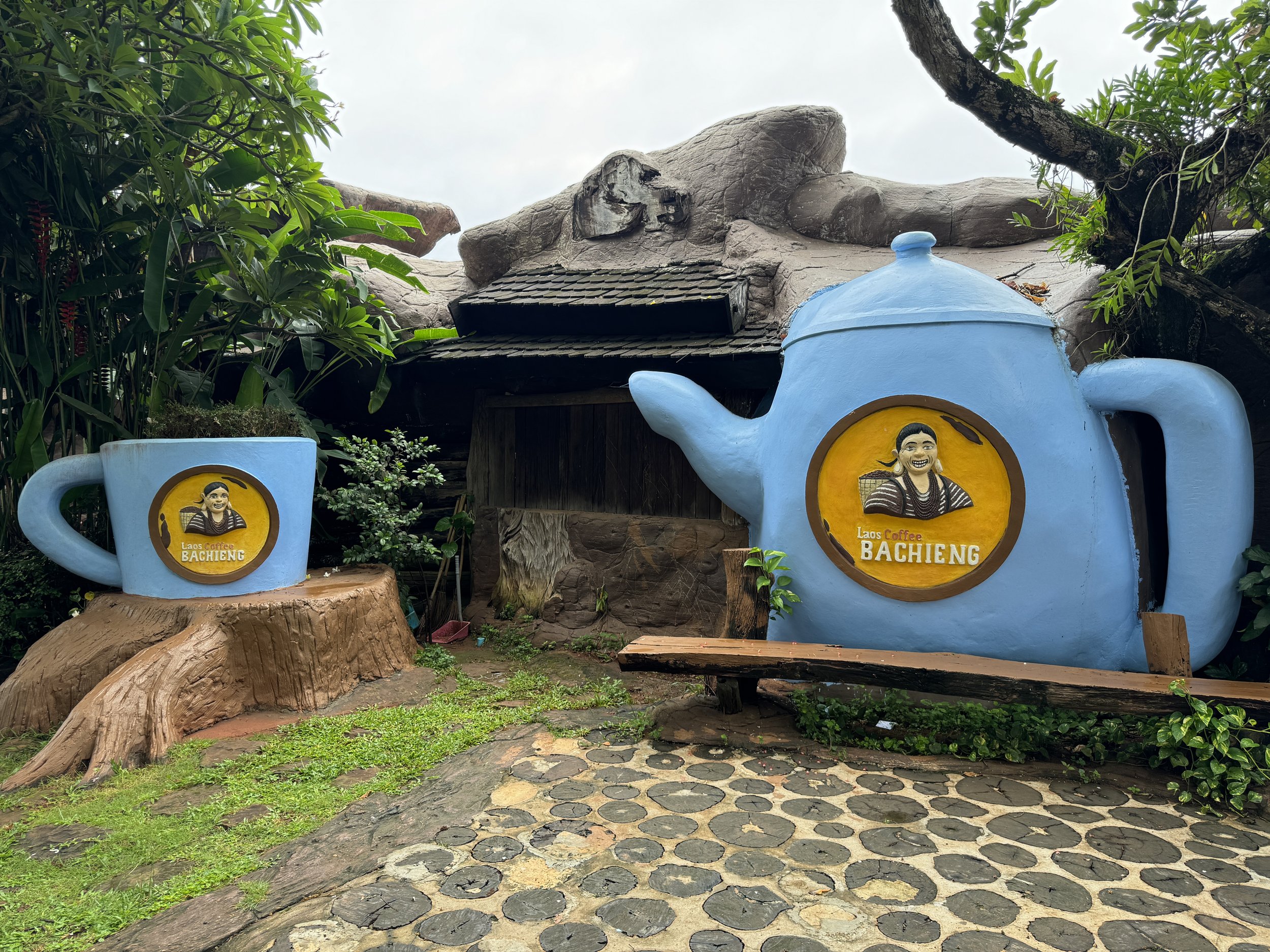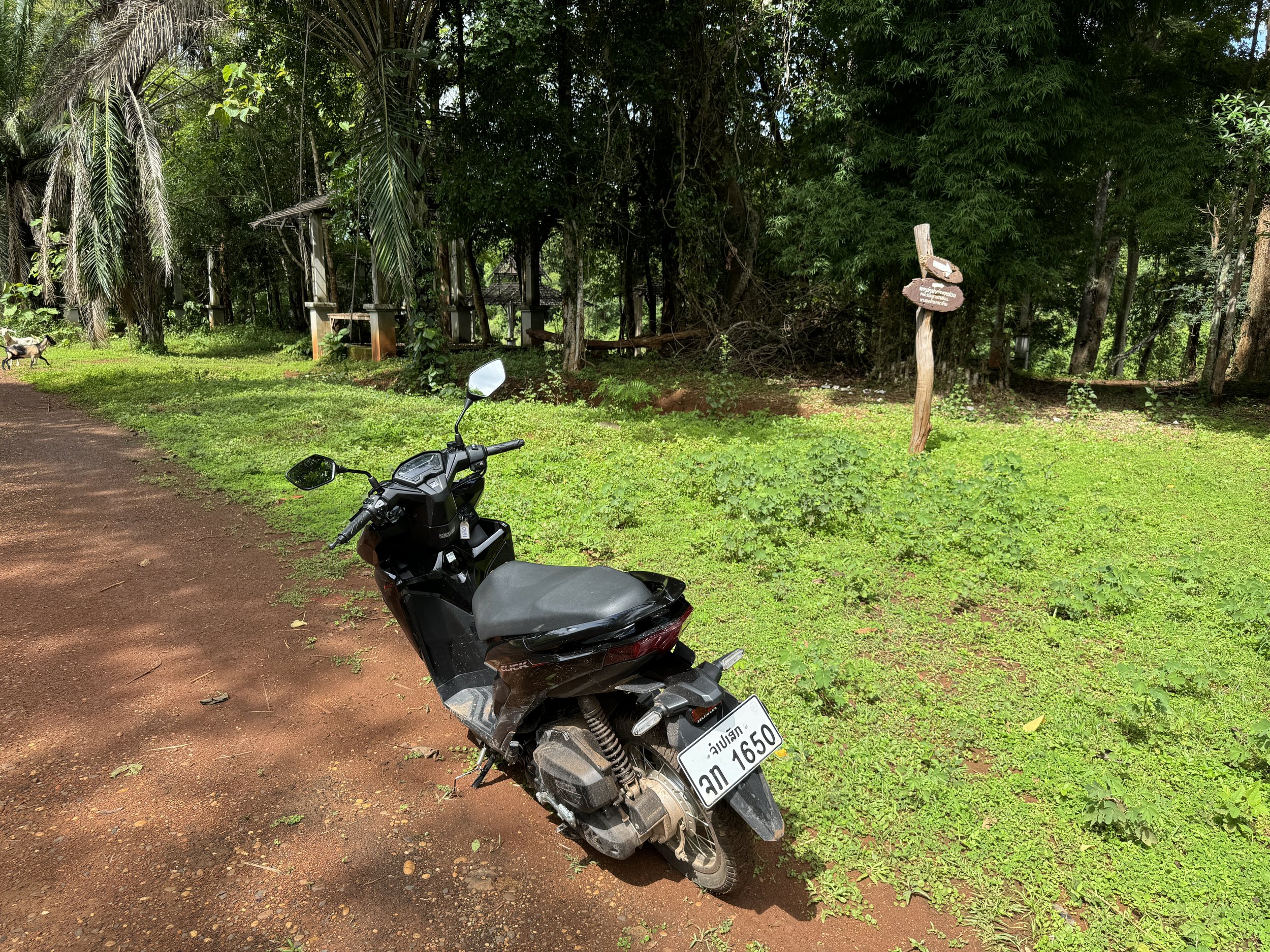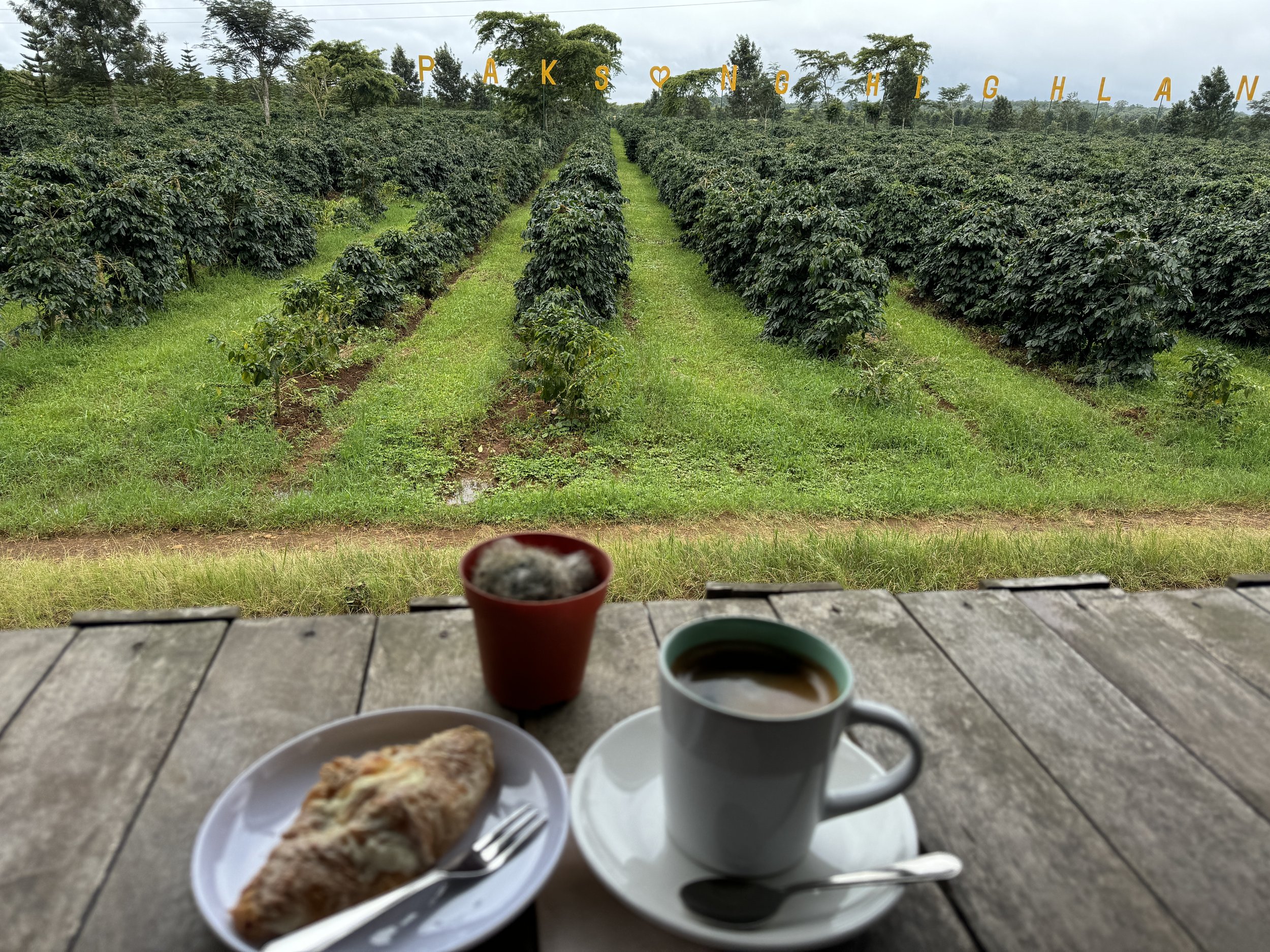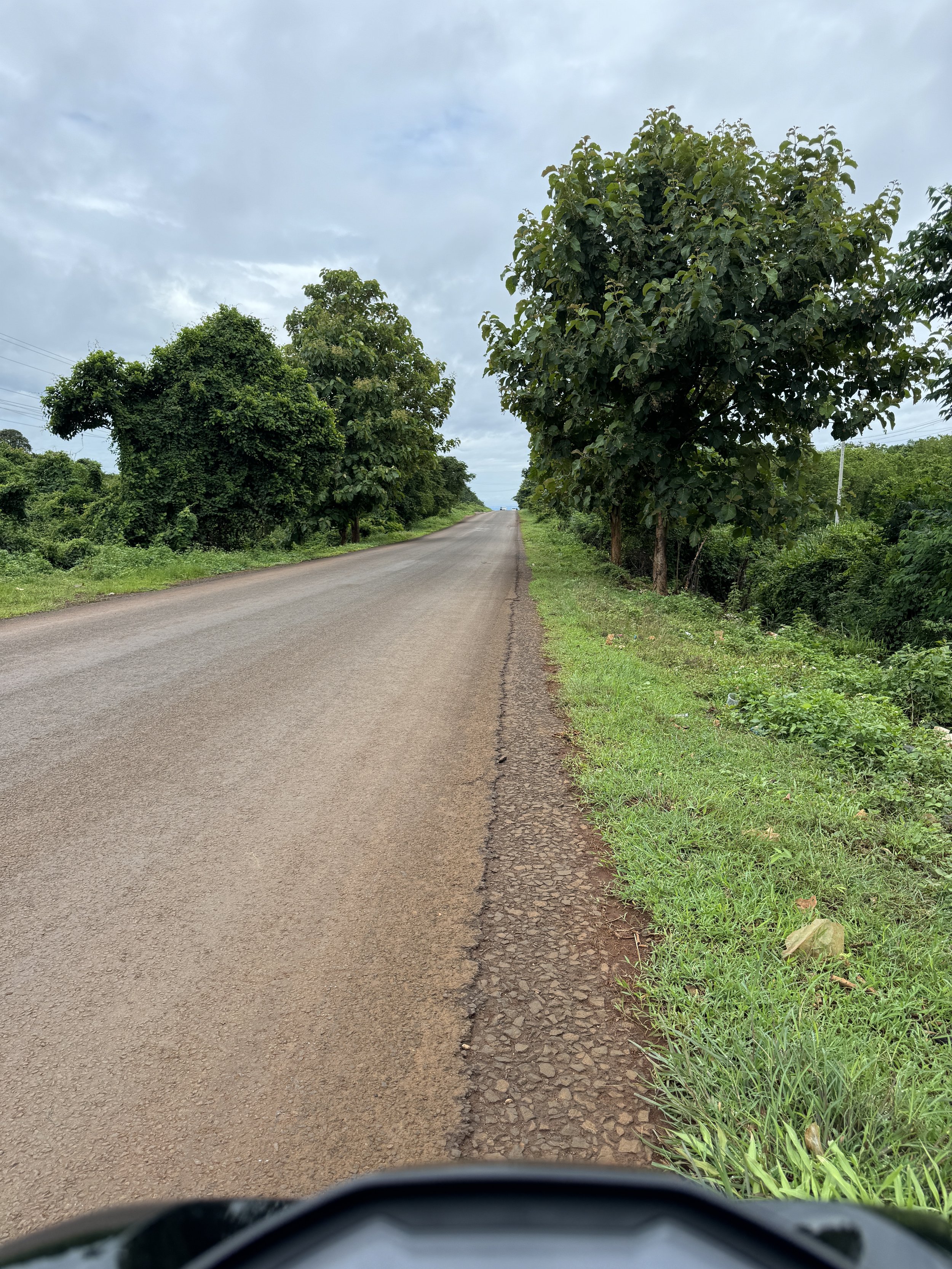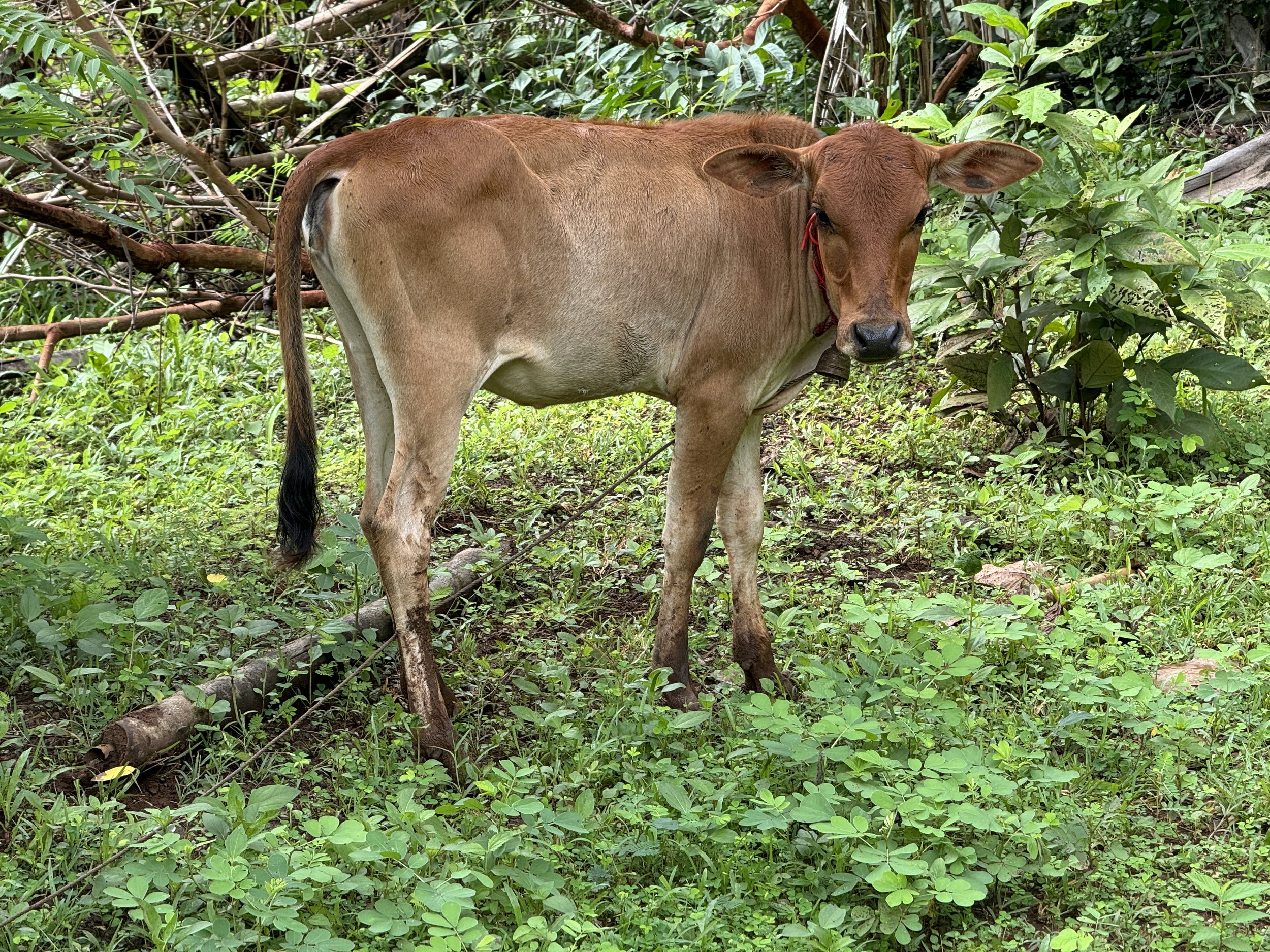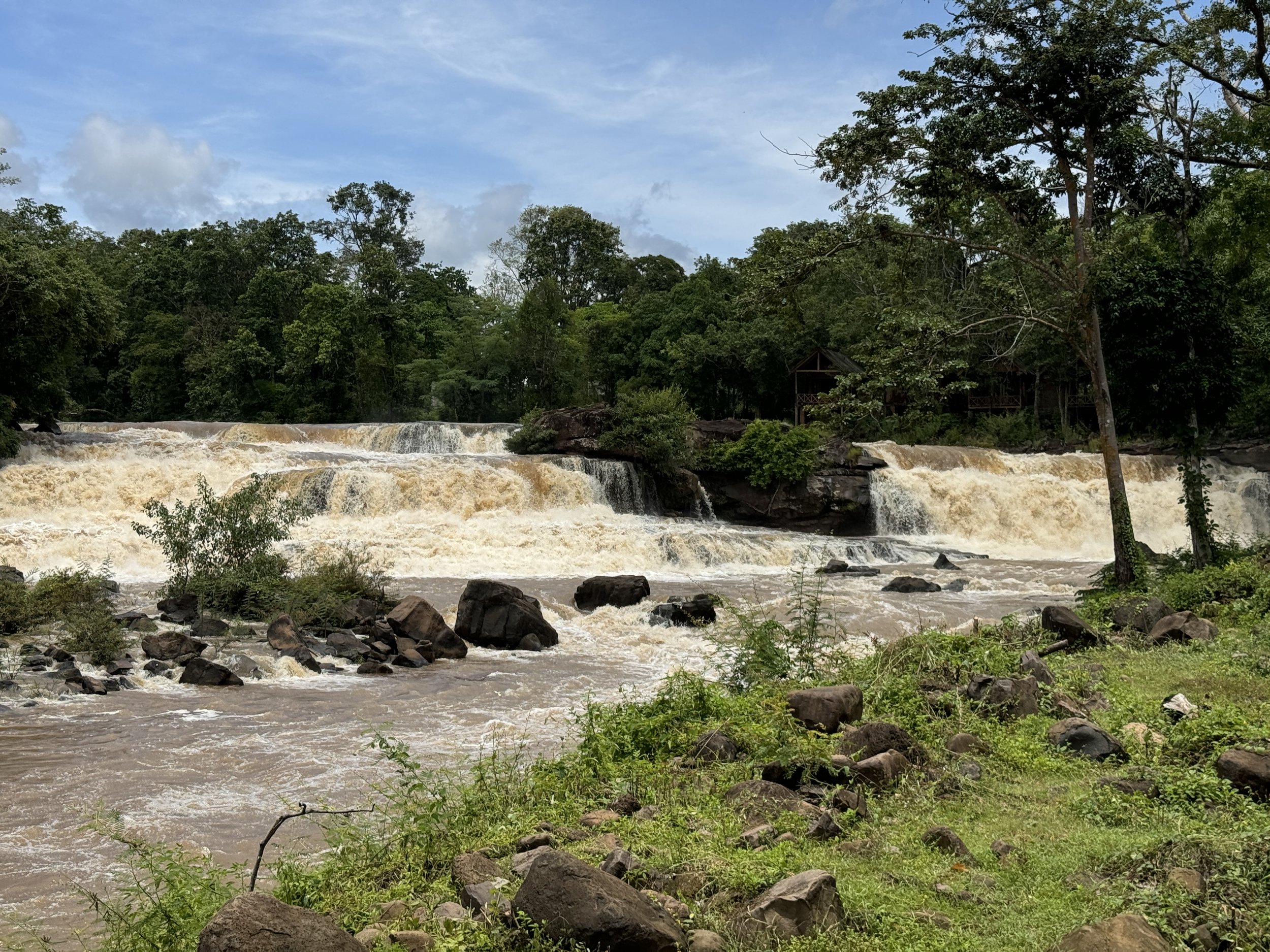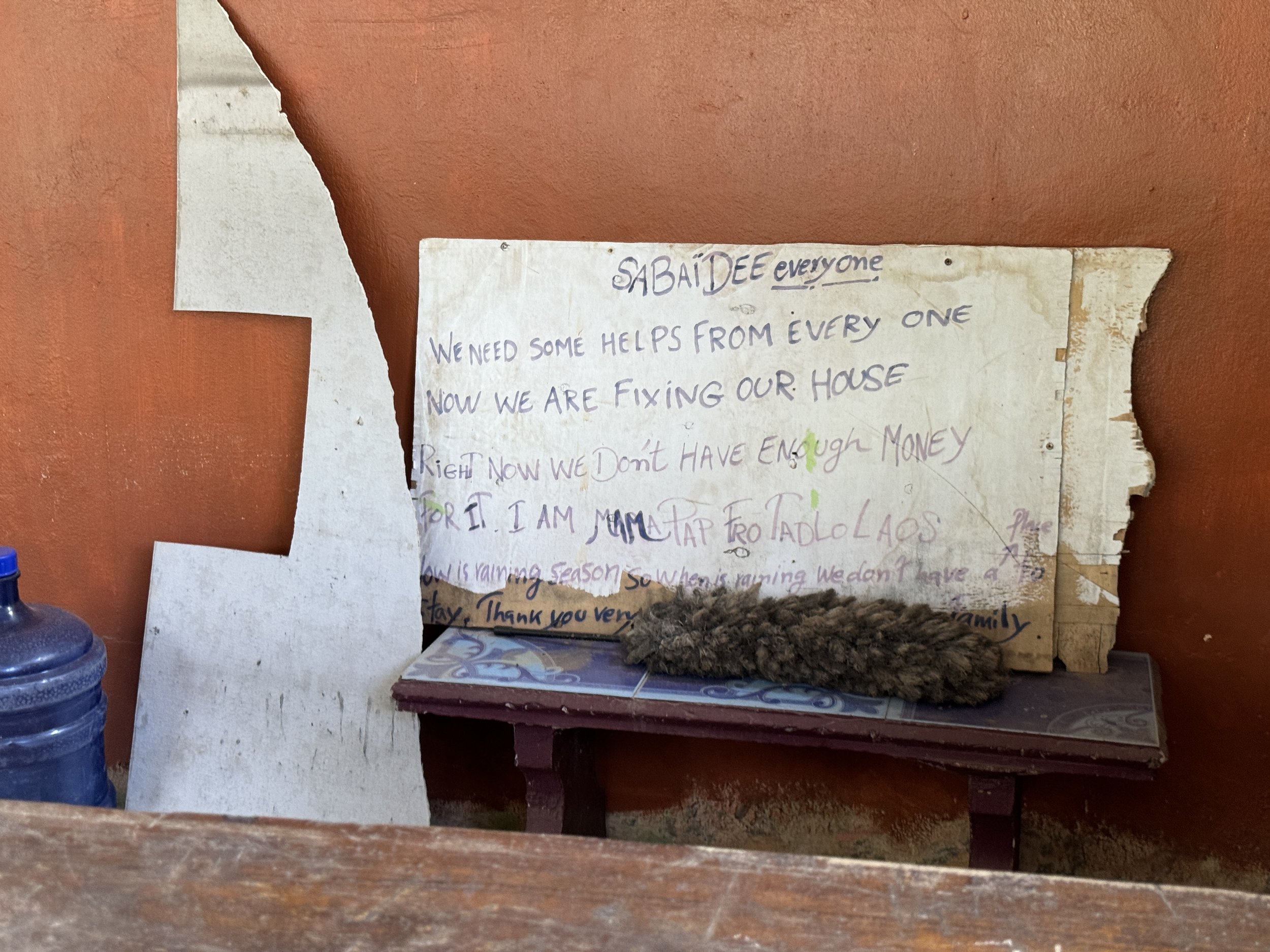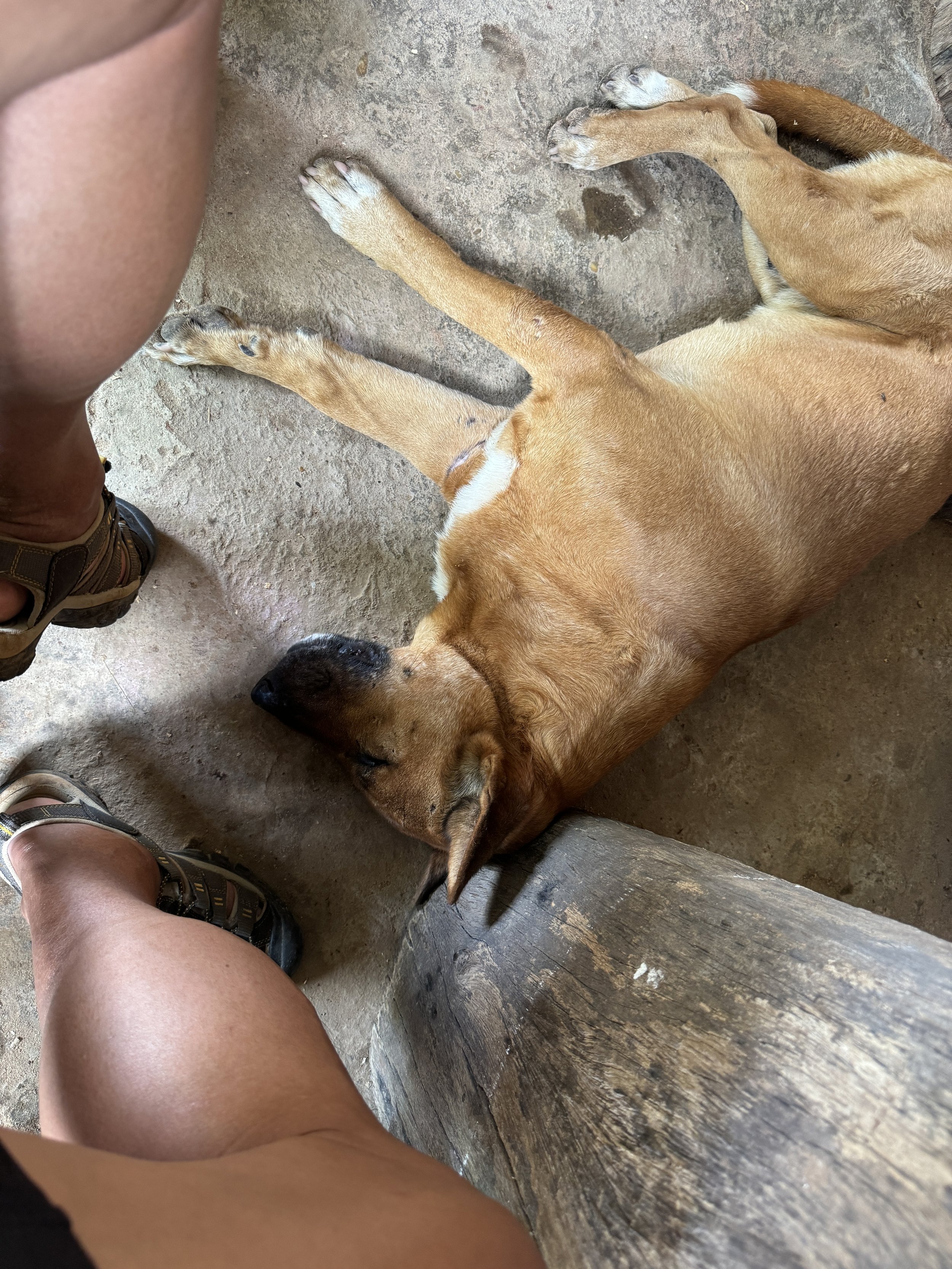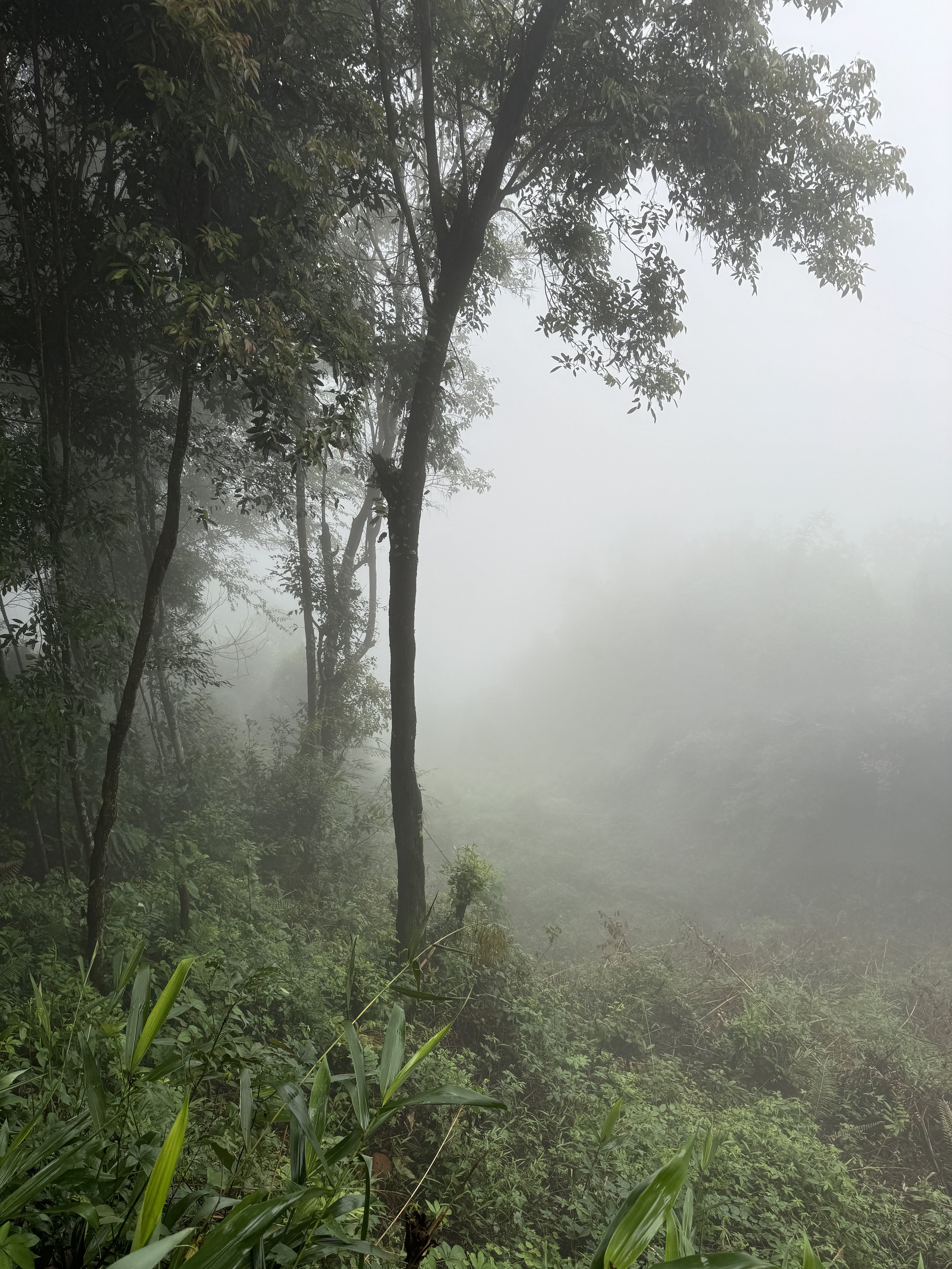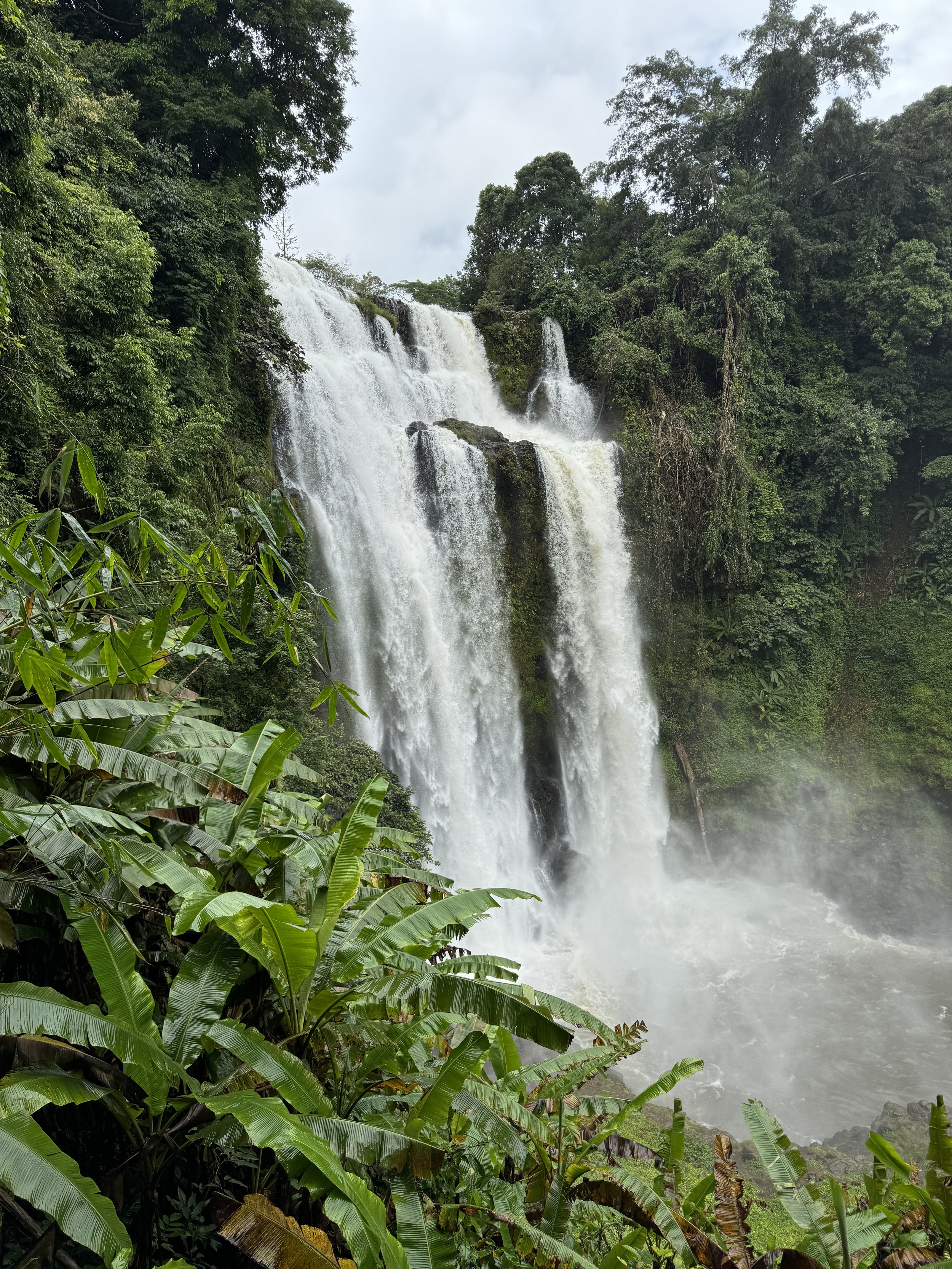July 15
Bolaven Plateau
The Bolaven Plateau is a high plateau situated east of Pakse. It has dozens of amazing waterfalls to explore and is a favorite for the adventurous tourists to the area. By far the easiest way to explore the Plateau is to rent a motorbike and make your way around the plateau. There are many guides online for itineraries/paths for long or short loops around the plateau.
Renting a motorcycle/scooter is really simple. You show up at a rental shop, show them your passport and negotiate the rate. I’ve been told that some shops do want to see an international driving permit, but most don’t care. They don’t worry about motorcycle endorsements or for that matter want to see your regular driver’s license either.
My scooter to explore the Bolaven Plateau. It’s a Honda Click 125 with automatic transmission.
Some shops want to keep your passport as collateral and give you a copy of it along with a receipt/document to show the authorities if you get pulled over. Others keep the copy and let you take the original passport. In my case, they wanted to keep the passport, but the owner of my guesthouse assured me that the shop I was using was reliable and I wouldn’t have any issues. Take video/photos of your bike before riding it away from the shop so that any damage is recorded.
My Honda was great, easy to ride, and over three days averaged about 60km per liter of gas. That’s about 140 miles per gallon. And as a side note, gas in Laos is almost exactly the same price as in the US, about $4 per gallon. That was true in Cambodia too, but gas in Indonesia was much cheaper.
The Cafe where I stopped for breakfast and coffee my first day exploring the Bolaven Plateau
During my three days of riding I encountered a few police checkpoints, but I was just waived through all of them. Other riders and cars were stopped, but I don’t know what criteria the Police were using to decide who to stop at the checkpoints.
There are also tollbooths on the main highways, and the roads are well paved and in great condition. In fact, the main highways in the Pakse area are arguably in better shape than freeways/highways in the US. Luckily, only cars, trucks, and busses have to stop to pay tolls. Motorbikes and motorbikes with sidecars are exempt from tolls and have special bypass lanes at the tollbooths.
I didn’t do a complete loop. I did two out-and-back trips and stayed in Pakse each night. There are some small towns where you can stay overnight on the loops, but I didn’t want to drag all my stuff on the bike.
Once you exit the highway to find the waterfalls, the roads are dirt/clay/gravel.
The two main things to explore on the loop are the waterfalls and the agro-tourism sites, mainly centered on coffee production. There are a lot of coffee farms on the plateau and the hillsides going up to the plateau. Coffee one of the chief exports of the area. There are even large factory roasting plants along the highway. The aroma of roasting coffee from the plants is so pleasant as you’re riding along, and the coffee in Laos has so far been really good.
The waterfalls were beautiful. There was one waterfall, called Tad Fane, that I couldn’t see because when I visited, the viewpoint is above the waterfall and the entire area was socked in with fog. There is a tourist stop there that sells everything from coffee to zip line excursions across the top of the waterfall. It was by far the busiest waterfall I visited, and there were dozens of people paying $35 (USD) to zip line across a waterfall they would never see. I guess giving back to the Lao isn’t a horrible thing to do.
Having coffee and pastry (what else would it be?) at a coffee farm on the Plateau loop.
The various waterfalls I visited range from smaller ones that are about 10 feet tall to Tad Fane (the one I couldn’t see because of fog) at about 300 feet tall. They all have their own charm, and being able to take my time and see them, mostly as the only visitor, was soothing and fun.
According to a local I talked to at the entrance to one of the falls, all the waterfalls in the area are running much stronger than normal for this time of year because they have had lots of rainfall for this early in the rainy season. As you’ll see from some of the videos in this post, the amount of water is spectacular.
If you ever are in Laos and want to spend time contemplating the meaning of life, doing so out in nature while watching the power of these waterfalls and eating local fruit from the markets is a wonderful way to do it.
I bought so much fruit at these local market stands. Mangosteens, Mangos, Dragonfruit, Lychees, and more

